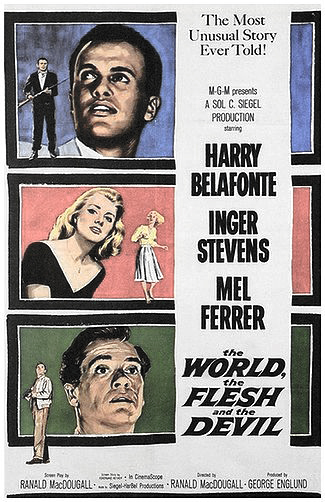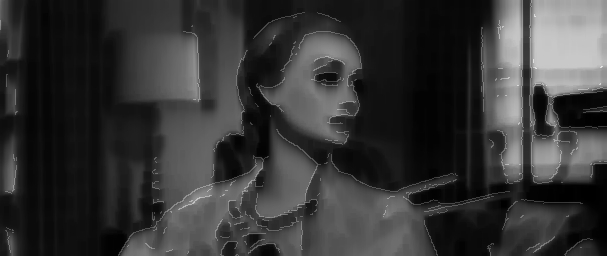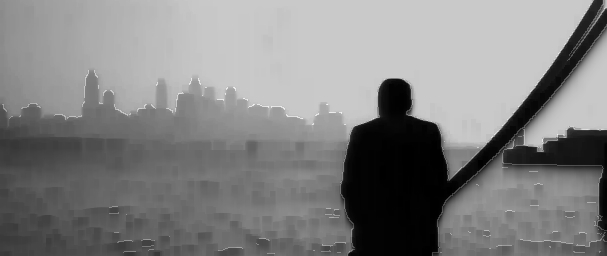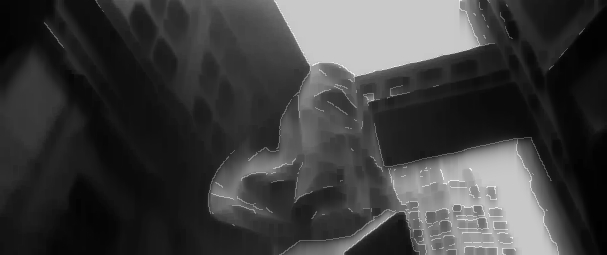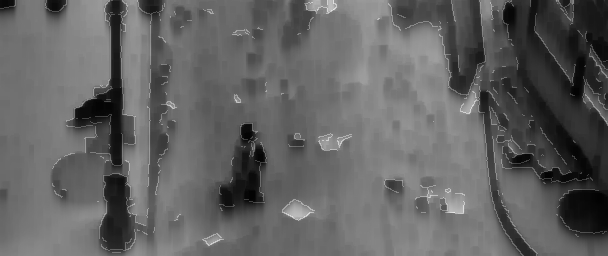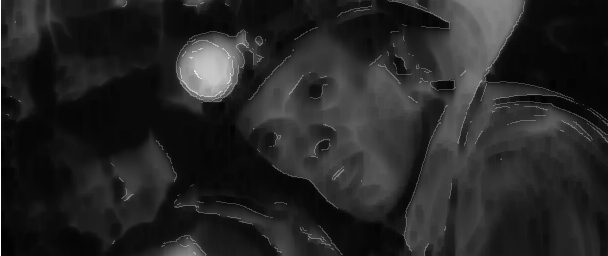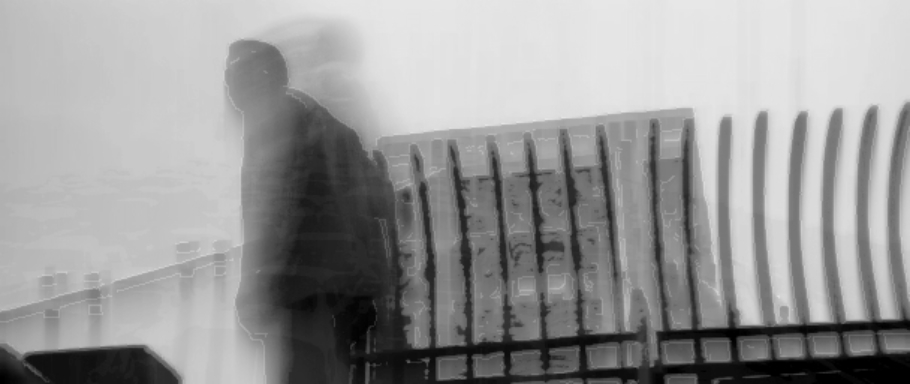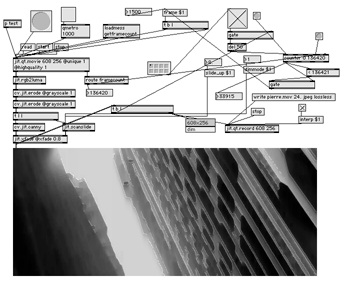01_2007
+++++++++++++++++++++++++++++++++++++++++++++++++++
Nadèle 1954 is an audio visual piece. It expounds a 1959 science fiction movie and transposes it to another piece staggering between my abstraction and figuration from the actual movie. I have chosen the 1959 version of The World, the Flesh and the Devil. This Ranald MacDougall movie is based in part on two sources: the novel The Purple Cloud by M. P. Shiel and the story End of the World by Ferdinand Reyher.
The plot is rather similar to many other movies like The Last Man on Earth in 1924, the wonderful The Last Man on Earth from 1964, the 1959 On the Beach, the 1971 The Omega Man, the 2000 On the Beach, or I Am Legend in 2007. Those movies describe the fantasy a single or a small group of men will one day be the last human beings to live on the planet.
The movie makes an impressive visit to an empty Manhattan in which the hero discovers he is not alone. A lady and another man rise into the story. The situation slowly evolves from a Jean-Paul Sartre No Exit (Huis Clos in French) between existentialist individuals to a more general scale. That scale would rather relate sociological situations and behaviors in a more current context than the one characterized in the movie.
Many people ask why I entitled it Nadèle 1954. The N is for the negation, the negative, and the lack of presence. The date 1954 is simply because of my interest for the year 1954 when post-war technological progress mixed with the fear of a nuclear apocalypse influenced artists and intellectuals of that time. Adèle stands for the name of the lady.
Ranald MacDougall merely made a socially engaging drama by covering taboos like interracial rivalry, cultural differences, selfishness, and mental collapsing. The transformed version of the movie enhances the cataclysmic poetry of an empty city like New York. But the main plot resides in the relationship between those three persons with their respective psychological characteristics. Traits belong to their own personality, to the exceptional situation, and to a particular moment of their life. Affects take over the importance from all other plots in the movie. It reaches a point when both males compete and chase each other, ready to kill and die although they are the last remaining living men. This situation is a usual one in everyday life. Love is not sometimes only a question of duality but a question of triality. Two persons and a third entity that probably is the extra one, the one that has to move back and find a place, and moment, when it will become the second entity. This third unstable entity can be human, an external element, or a social/cultural group different from others. This is not a generalization in psychology but rather an interesting poetic point of view.
The movie and the sound consist of a well-chosen continuous filter effect. The result is a long and slow evolution of sound and moving images where time frames interlace one another. The work focuses on two main ideas: contour and time persistence.
The visual contour I build is very similar but simpler than algorithms such as the VRay Toon Shader. I use MaxMSP Jitter for doing that. Many movies make use of this technique to generate cartoons from real film takes. The audio contour is quite similar since I am working in the spectral domain and simply looking for peaks. The mapping between the analysis and its re-synthesis (additive synthesis) is artistically empirical. It does not make use of mfcc or any other process after the spectral analysis for the sound or edge detection for the image. The result sometimes sounds very minimalist and “dronic” (drone). Sometimes, pure tones rhythmically arrive from the deepness of a long reverb. One could make connections with some “esthetic movement” close to Ryoji Ikeda works.
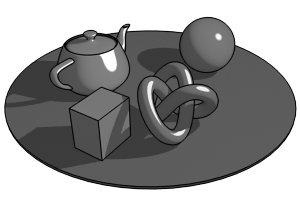 |
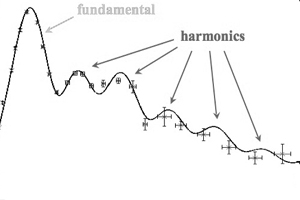 |
cartoon maker from real image vs. audio spectrum peak extraction
Time persistence is a very rich subject because it is a projection of movement to space. Cinema applications like time slice effects or slit-scan use this property. In the movie, a slight motion blurring effect is used only on some chosen elements in the image. This allows elements from the image to escape contours and thus make ghost images. The effect is similar to a resonance or a reverberation. In the movie, time does not effectively slow down, the reading of the audience does. Since this resonance happens during the movie’s duration, its dramaturgic evolution deeply becomes time and leaves its own interpretation and perception to the spectator. It also results in some kind of relief impression giving the impression of a new perspective.






